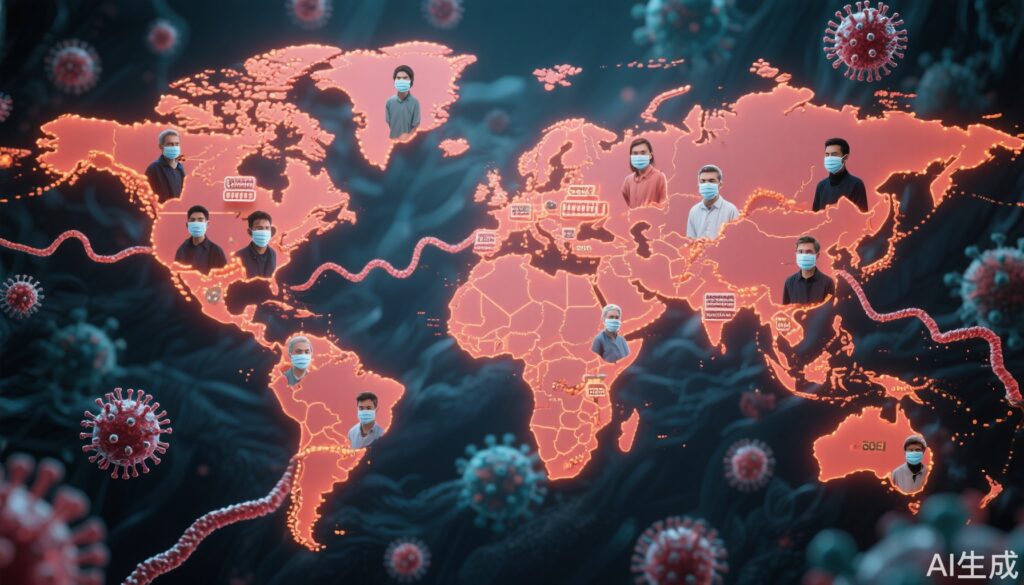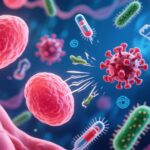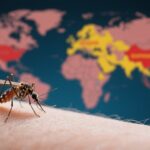The Return and Rise of Infectious Diseases
For much of the 20th century, many believed that modern medicine had conquered infectious diseases. Vaccines, antibiotics, and improved sanitation drastically reduced illnesses like smallpox, polio, and tuberculosis in many countries. Yet, in recent decades, new infectious threats—SARS, MERS, Ebola, Zika, and most recently COVID-19—have emerged with alarming regularity. Meanwhile, old foes like measles and tuberculosis have staged dramatic comebacks. Why do new pathogens keep appearing, and why do some diseases resurface after years of quiet?
The Changing Landscape: How and Why New Pathogens Emerge
Several factors drive the emergence of new infectious diseases:
- Pathogen Evolution: Microbes like viruses and bacteria evolve rapidly. Genetic mutations allow them to adapt to new hosts or become resistant to drugs (Morens et al., 2020).
- Environmental Changes: Deforestation, urbanization, and climate change bring humans into closer contact with wildlife, increasing the chances that animal pathogens (zoonoses) jump to humans.
- Globalization: International travel and trade can spread diseases quickly across continents.
- Breakdown in Public Health Systems: Conflict, poverty, and vaccine hesitancy can disrupt disease control, enabling outbreaks.
Case Vignette: The Story of Michael and the Unexpected Outbreak
Michael, a 38-year-old teacher in New York, enjoyed hiking. After a trip to a newly developed forest park, he developed fever and fatigue. Doctors initially suspected flu, but as more hikers showed similar symptoms, tests revealed a novel tick-borne virus never before seen in the region. Public health officials traced the outbreak to a population of deer that had migrated due to suburban expansion.
This scenario illustrates how environmental changes and human activity can drive the emergence of new pathogens, sometimes with little warning.
Scientific and Clinical Evidence: What the Data Tell Us
Several recent studies reveal important trends:
- Over 60% of emerging infectious diseases in humans are zoonotic—originating in animals (Jones et al., 2008).
- Genetic sequencing shows that many new viruses arise from recombination events, where genetic material from different strains mixes (Woolhouse & Brierley, 2018).
- Antibiotic resistance is rising globally, threatening to make old diseases deadly again (WHO, 2023).
Table: Key Drivers of Infectious Disease Emergence
| Driver | Example Disease | Mechanism |
|---|---|---|
| Pathogen Evolution | Influenza, COVID-19 | Mutation, recombination |
| Zoonotic Transmission | Ebola, SARS, HIV | Humans exposed to animal hosts |
| Environmental Changes | Lyme Disease | Habitat loss, climate change |
| Globalization | COVID-19, SARS | Rapid international transmission |
| Public Health Breakdown | Measles resurgence | Vaccine hesitancy, disruption |
Misconceptions and Harmful Behaviors
Despite advances in science, misconceptions still abound. Some common myths include:
- “Vaccines cause disease outbreaks.” In fact, vaccines prevent outbreaks; refusal or hesitancy allows diseases like measles to return.
- “New diseases are all man-made.” While laboratory accidents are rare, most new pathogens emerge naturally due to environmental and evolutionary pressures.
- “Antibiotics cure viral infections.” Antibiotics work only against bacteria, not viruses. Overuse accelerates resistance.
These misconceptions can lead to harmful behaviors, such as avoiding vaccination, misusing antibiotics, or spreading misinformation.
Correct Health Practices and Practical Recommendations
To protect yourself and the community:
- Stay up-to-date with recommended vaccinations.
- Wash hands regularly and practice good respiratory hygiene.
- Use antibiotics only as prescribed by a healthcare professional.
- Support and trust public health guidance during outbreaks.
- Report unusual illnesses or clusters to health authorities promptly.
Expert Insights and Commentary
Dr. Jessica Turner, an infectious disease specialist at Johns Hopkins, notes, “We live in an era of unprecedented change—ecologically, technologically, and socially. These shifts create new opportunities for pathogens to emerge and spread. Our best defense is a strong, adaptable public health system, ongoing surveillance, and global cooperation.”
She adds, “The return of diseases we thought were controlled reminds us that complacency is not an option. Vaccination, early detection, and rapid response save lives.”
Conclusion
The re-emergence and evolution of infectious diseases are not simply relics of the past, but an ongoing challenge shaped by our interactions with the environment, animals, and each other. By understanding the science, dispelling myths, and supporting evidence-based practices, we can better prepare for, and prevent, the next pandemic.
References
Jones KE, Patel NG, Levy MA, et al. Global trends in emerging infectious diseases. Nature. 2008 Feb 21;451(7181):990-3.
Morens DM, Daszak P, Taubenberger JK. Escaping Pandora’s Box — Another Novel Coronavirus. N Engl J Med. 2020;382:1293-1295.
Woolhouse MEJ, Brierley L. Epidemiological characteristics of human-infective RNA viruses. Sci Data. 2018;5:180017.
World Health Organization. Antimicrobial resistance. Fact sheet. 2023. https://www.who.int/news-room/fact-sheets/detail/antimicrobial-resistance



